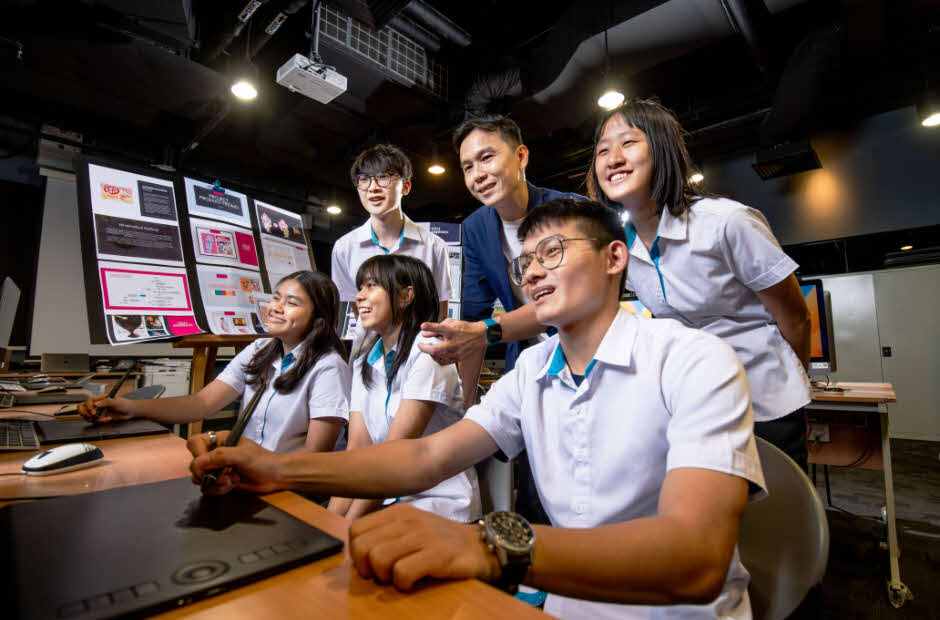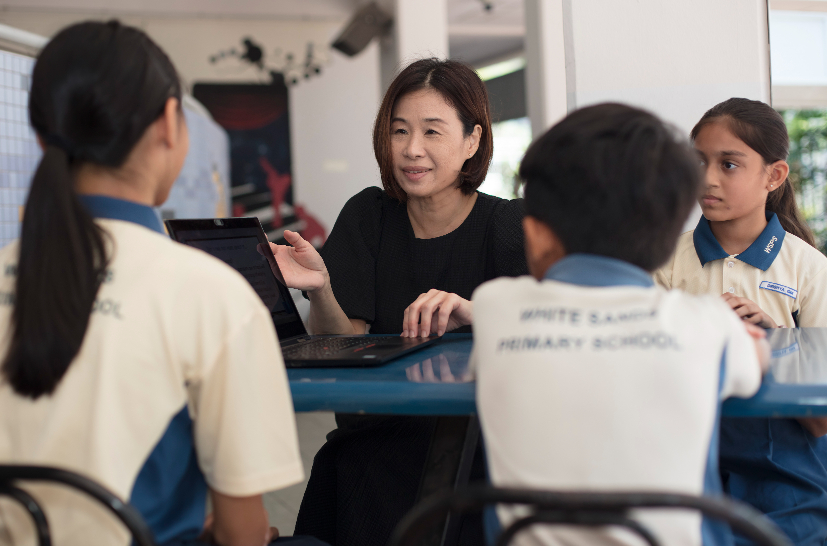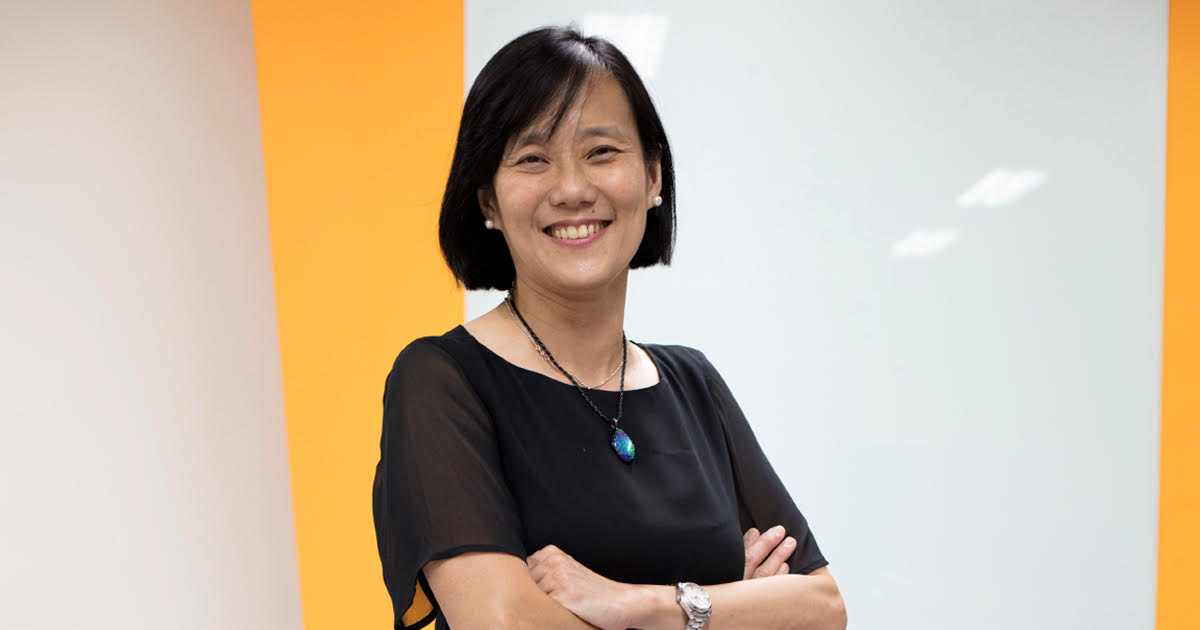When ITE design lecturer, Mr Leong, first started an informal club to build miniature models, he and a handful of student enthusiasts would gather at a table outside a classroom. The club is now a full-fledged co-curricular activity (CCA) with about 40 members who take part in regional competitions.
Besides bringing together students who liked manga, movies and modelling, the CCA trains them in patience and focus. Members also learn useful skills for running businesses and events, such as product pricing, stock management and public engagement.
The dedication that Mr Leong invests in sculpting mini models also applies to his finetuning of teaching programmes and strategies. His purpose? To uncover the strengths of his students.
Inspiration: Finding motivation from others
Mr Leong used to be an art director in a design agency. He chanced upon teaching when his colleague asked him to fill in for her at a kindergarten where she taught art part-time. After one session, he was hooked. He left that class as an official preschool art teacher, as the school offered him a job on the spot.
Mr Leong joined ITE upon completing his master’s degree in design, eager to put his skills to work. He overcame first-day jitters with the support of his fellow teachers and, to his surprise, the encouragement of his students.
“They said, ‘don’t worry, don’t be nervous, it’s okay’,” he recalls. “It gave me a lot of motivation.”
Transformation: Designing a fresh approach to learning and teaching
Today, as Section Head in ITE College Central’s School of Design & Media, Mr Leong has stepped up his efforts to uncover students’ potential.
“Mr Tim” – as students call him— introduced studio-based learning, a concept borrowed from his creative agency days. It facilitates collaborative learning through real-world scenarios, while helping students identify their strengths.
In studio-based learning, students are assigned to teams focusing on course modules such as 3D Modelling, Post-production and Project Management. In essence, Mr Leong and his team transformed the classroom into a motion graphics agency. “I wanted a solution that is more effective in delivering competency and knowledge, so students not only understand, but are also able to apply what they have learnt,” Mr Leong shares.
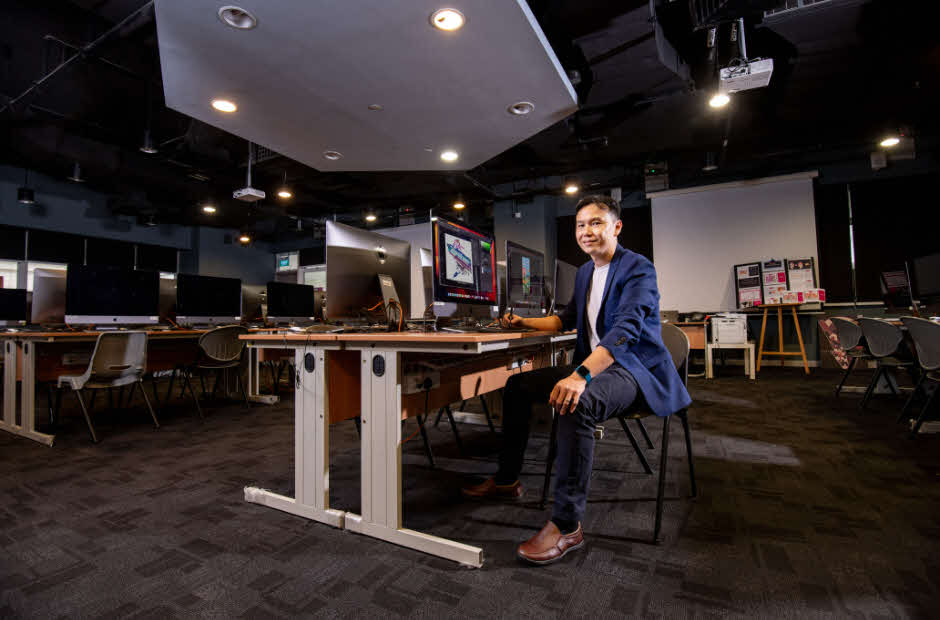
“Some may not be good in animation, but are good in planning. That’s how studio-based learning works. We count on the strengths of the students to realise the whole project together.”
Mr Timothy Leong Kim Soon
As a production takes shape and everyone kicks into high gear, even the idle ones get motivated, Mr Leong observes. This is where individual strengths start to show, and where teachers get an opportunity to assess and reassign individuals to teams where they can thrive.
“Some may not be good in animation, but are good in planning,” he explains. “That’s how studio-based learning works. We count on the strengths of the students to realise the whole project together.”
The exchange of ideas between students also adds more dimensions to studio-based learning. “It’s not always learning by doing. By observing, you also learn,” he adds.
Another novel approach Mr Leong takes is to incorporate competitions into the curriculum. Mr Leong has lost track of the number of competition winners he has taught over his 20-year career – at the national level, “quite a number” was his last count. He is particularly proud of how his Digital Media Design student was recognised for excellence in a different field of design: fashion.
Mr Leong observes his students’ talents and recommends them to participate in competitions that would give them the right amount of exposure and stretch, including those outside their specialisation. “From their character, and the way that they handle tasks, we can identify what they may learn from and excel in. Why not just give them a push?”, he suggests.
He sees competitions as a teaching tool that brings the class together. “If the students win, their self-esteem will increase. If their peers win, they would be motivated too,” he says. “I integrate competitions into the assignments as much as possible. They serve as real-world projects for the students to work on.”
There is no better way to measure the success of his approach than how well his students perform in the real world, he notes: “More than a quarter of them score As for their industrial attachment or on-the-job training.”
Achievements aside, he reminds students to conduct themselves well day-to-day. Having seen talented students drop out of internships due to behavioural issues, he now emphasises basic etiquette from day one. “If you’re late, you knock, ask for permission to enter and then apologise,” he explains. He believes that building these habits will benefit students as they enter the workforce.
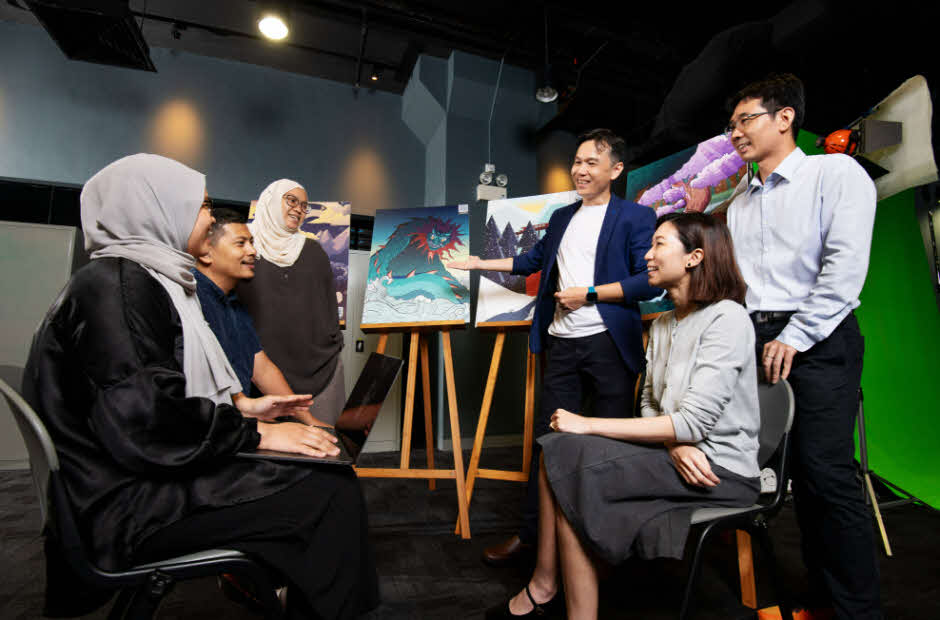
Reflection: Standing in the shoes of others
To Mr Leong, teaching is about taking others’ perspectives. When shaping his teaching approach for a particular topic, Mr Leong puts himself in his students’ shoes and asks three questions: “What would he want to learn from the teacher? Would he like the way it is taught? Would it make him interested enough to learn more about the topic?”
For example, in planning education and career guidance experiences, he prioritises bite-sized, hands-on learning, because he knows that secondary school students are looking to quickly understand what it is like to be a design student. In collaboration with the Arts Education Branch at the Ministry of Education, he co-created a Design Immersion Programme (DIP) that includes workshops and previews of courses run by the School of Design & Media. He also developed a three-day elective, “Creating an Interactive AR Experience”, to provide students a taste of developing augmented reality projects.
This same principle is also evident in his advice to beginning teachers. “There’s no one-size-fits-all,” he says. “Your approach to this class may not be effective in the second class. Go into different classes, see different approaches of teaching, then you will be able to formulate your own style.”
One might also add what his ITE students said on his first day, “don’t be nervous, it’s okay”.



